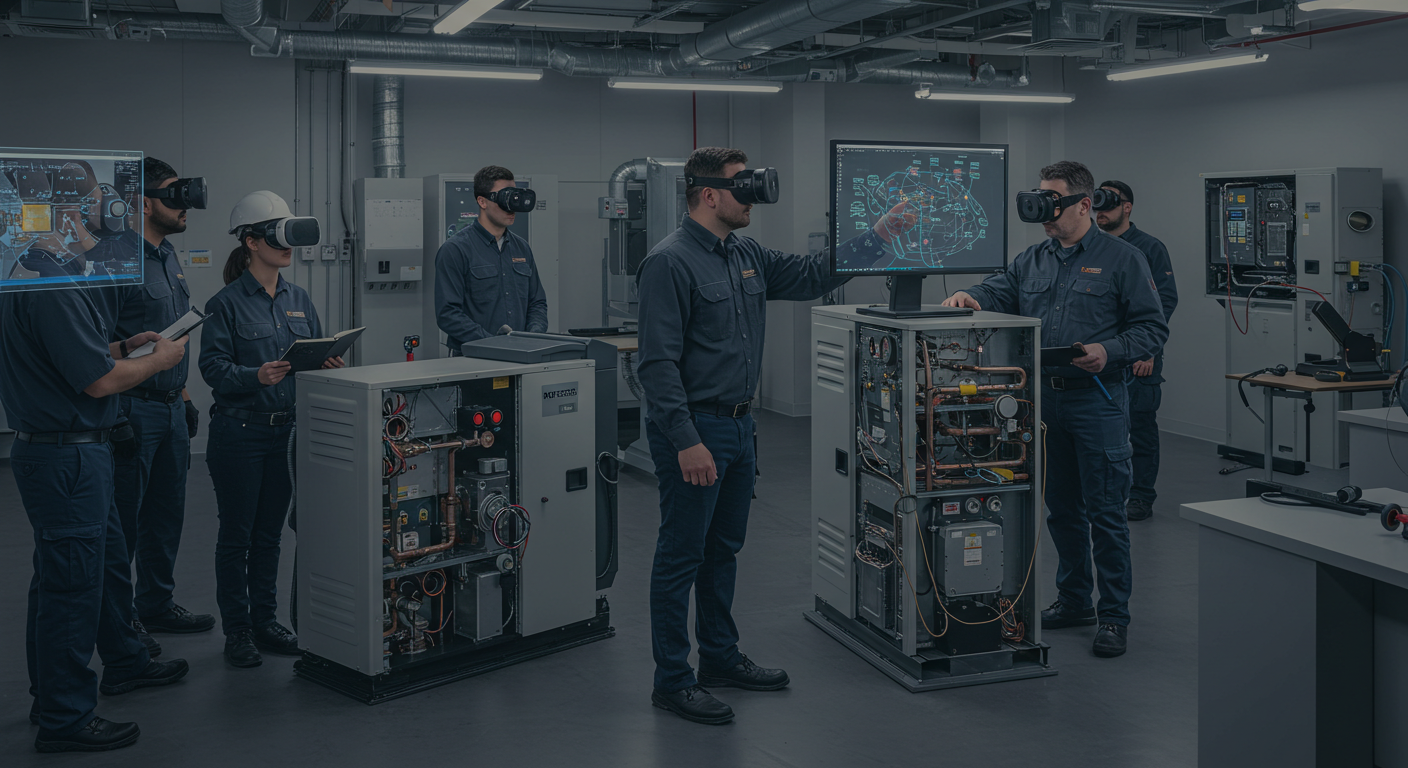
How to Build Custom Training for Your HVAC Team
As we step into 2025, the HVAC industry is evolving rapidly, and so are the demands on your workforce. With the average age of technicians climbing and a nationwide shortage looming, it’s crucial to invest in custom HVAC training programs that keep your team competitive and compliant. Let’s explore how you can build an effective training strategy that meets these challenges head-on.
Understanding the Current HVAC Training Landscape
By now, 75% of HVAC companies are gearing up to invest in upskilling programs. The rise of microlearning, AR simulation training, and certifications for emerging technologies are at the forefront. With low-GWP refrigerants taking over 60% of new installations, 40% of your technicians will need new certifications. This shift underscores the importance of staying ahead in training your team to handle these refrigerants safely and effectively.
Designing Your Custom HVAC Training Program
Creating a custom HVAC training program isn’t just about keeping up with trends; it’s about meeting the specific needs of your team. Start by conducting a skills audit to identify gaps and set measurable KPI-linked goals. Incorporate continuous employee feedback to refine your program over time. Regular upskilling can significantly boost technician loyalty, customer satisfaction, and your first-time fix rate.
Incorporating Hands-On Training and Simulations
Hands-on training is irreplaceable, but with advancements in technology, AR/VR simulations offer a safe and cost-effective way to practice complex repairs. These tools are especially beneficial for troubleshooting and mastering new systems like Daikin’s IoT-integrated solutions. Through simulations, you can reduce errors and minimize offsite training costs.
Embracing Gamified Learning and Digital Tools
Gamified learning modules can make training more engaging and effective. By incorporating points, leaderboards, and rewards, you can foster a competitive yet collaborative learning environment. Additionally, integrating digital field tools enhances operational efficiency and skill acquisition.
Key Takeaways for Effective HVAC Team Development
- Conduct a thorough skills assessment to tailor training to your team’s needs.
- Incorporate AR/VR simulation training to enhance safety and reduce costs.
- Utilize gamified learning techniques to boost engagement and retention.
- Regularly update training to include new technologies and compliance requirements.
- Set measurable goals and gather continuous feedback to refine your training program.
Conclusion
Building a custom HVAC training program is an investment in your team’s future and your company’s success. By focusing on personalized, technology-driven training solutions, you ensure your technicians are prepared for emerging challenges and opportunities. Start today by assessing current skills and setting clear, actionable goals for your training initiatives.
Ready to elevate your HVAC team’s skills? Start implementing these strategies today and stay ahead in the industry.
Frequently Asked Questions
What is the best way to conduct an HVAC skills assessment?
The best way to conduct an HVAC skills assessment is by evaluating each technician’s current capabilities against the required competencies for emerging technologies and industry standards.
How can AR/VR simulation benefit HVAC training?
AR/VR simulation provides a safe, cost-effective platform for technicians to practice complex repairs and troubleshoot issues without the risks associated with real-world scenarios.
Why is gamified learning effective in HVAC training programs?
Gamified learning is effective because it engages technicians through competitive elements like points and leaderboards, making the learning process more interactive and enjoyable.
What are the latest trends in HVAC training?
The latest trends in HVAC training include microlearning, augmented reality simulations, and certifications for low-GWP refrigerants, along with the adoption of IoT-integrated systems.
How do I ensure my HVAC training program remains compliant with EPA regulations?
To ensure compliance with EPA regulations, regularly update your training materials to reflect the latest guidelines and emphasize the importance of proper refrigerant handling and leak detection systems.

